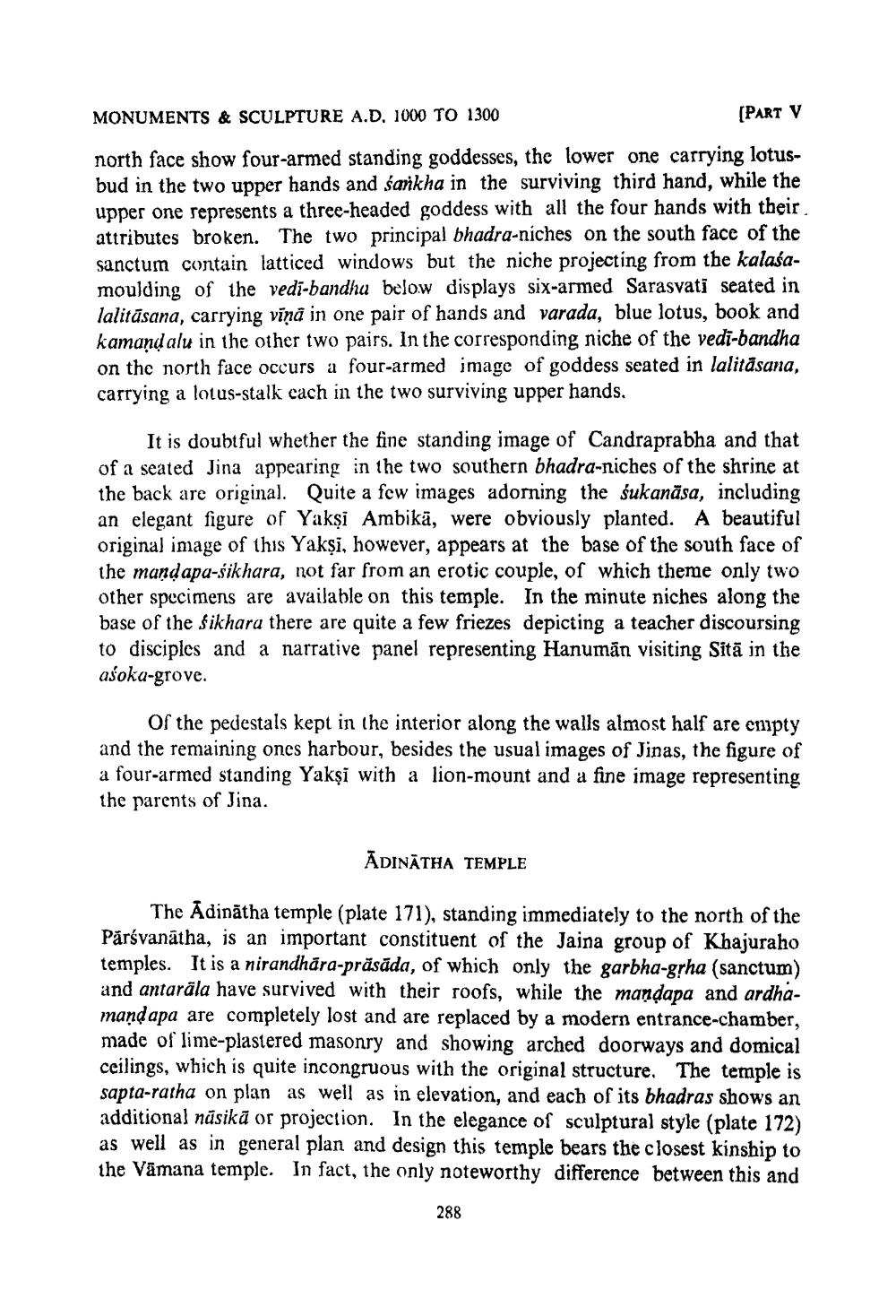________________
MONUMENTS & SCULPTURE A.D. 1000 TO 1300
(PART V
north face show four-armed standing goddesses, the lower one carrying lotusbud in the two upper hands and sankha in the surviving third hand, while the upper one represents a three-headed goddess with all the four hands with their attributes broken. The two principal bhadra-niches on the south face of the sanctum contain latticed windows but the niche projecting from the kalasamoulding of the vedi-bandhu below displays six-armed Sarasvati seated in lalitāsana, carrying vīņà in one pair of hands and varada, blue lotus, book and kamand alu in the other two pairs. In the corresponding niche of the vedi-bandha on the north face occurs a four-armed image of goddess seated in lalitäsana, carrying a lotus-stalk cach in the two surviving upper hands
It is doubtful whether the fine standing image of Candraprabha and that of a seated Jina appearing in the two southern bhadra-niches of the shrine at the back are original. Quite a few images adorning the sukanäsa, including an elegant figure of Yakşi Ambikä, were obviously planted. A beautiful original image of this Yakşi, however, appears at the base of the south face of the mandapa-sikhara, not far from an erotic couple, of which theme only two other specimens are available on this temple. In the minute niches along the base of the Sikhara there are quite a few friezes depicting a teacher discoursing to disciples and a narrative panel representing Hanuman visiting Sitā in the asoka-grove.
Or the pedestals kept in the interior along the walls almost half are empty and the remaining ones harbour, besides the usual images of Jinas, the figure of a four-armed standing Yakṣi with a lion-mount and a fine image representing the parents of Jina.
ĀDINĀTHA TEMPLE
The Adinātha temple (plate 171), standing immediately to the north of the Pārsvanātha, is an important constituent of the Jaina group of Khajuraho temples. It is a nirandhāra-präsāda, of which only the garbha-grha (sanctum) and antaräla have survived with their roofs, while the mandapa and ardhamand apa are completely lost and are replaced by a modern entrance-chamber, made of lime-plastered masonry and showing arched doorways and domical ceilings, which is quite incongruous with the original structure. The temple is sapta-ratha on plan as well as in elevation, and each of its bhadras shows an additional näsikā or projection. In the elegance of sculptural style (plate 172) as well as in general plan and design this temple bears the closest kinship to the Vamana temple. In fact, the only noteworthy difference between this and
288




